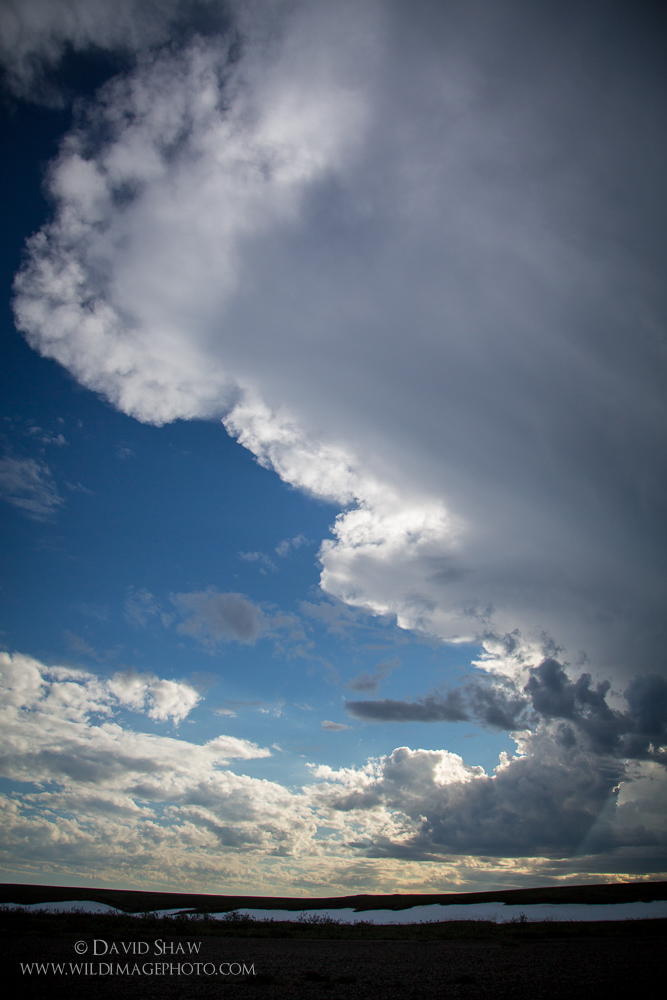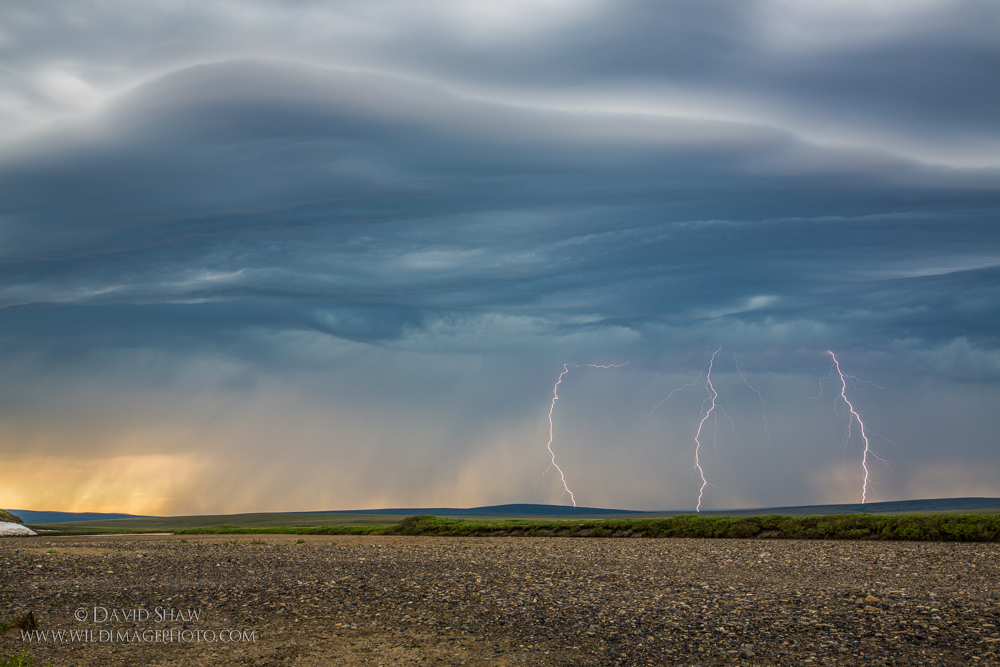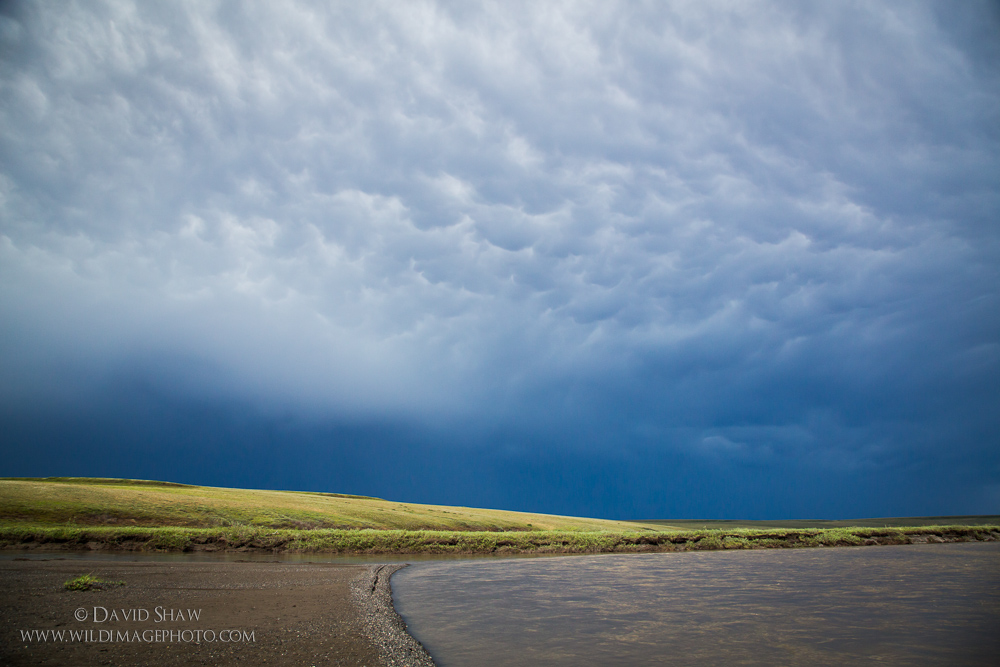Today I launch a series of posts reliving my summer’s travels. Since I was woefully absent here throughout the summer, I’m now given the opportunity to make up for it. Starting right here on the Kokolik River.
The Kokolik is a true arctic river flowing out of the northwest Brooks Range, winding through a series of long, stoney ridges before twisting its way through the coastal plain of the NPRA and reaching the ocean near the village of Point Lay. In mid-June I led a canoe trip for Arctic Wild down the river, which was rushing in full spring flood. Though there are many stories from this trip, some of which I’ll share in later posts, I’m going to start with the end.
The final evening of the trip, we went to bed under the bright arctic sun, our tents stifling hot in an atypical June heatwave. At midnight when I eventually turned in, I could see pillars of thunderheads building far to the south in the otherwise cloudless sky. Though the mountains themselves were out of sight over the horizon, I knew those towering monsters were rising over the Brooks Range. I assumed the storms would burn out long before reaching us. I was wrong.
The next morning lines of vapor were reaching out from ominous gray clouds. Still I held out hope that the storms would burn out. Surely, thunderstorms far out on the arctic coastal plain must be so rare as to be impossible? Apparently not. On they rolled toward us, menacing. A bush plane arrived for my first two clients, and they slipped out on the early flight, dodging the approaching storm in the well-handled Cessna. The other two clients and I sat on the shore of the river, watching, as the wind swirled first from one direction, then from another. Thunder rumbled.
Lightning flashed as the leading edge of the storm was right overhead, rising like a sky-scraper. We were going to get hammered by this storm, it was inevitable. We donned our rain gear. We were on a flat island in the river, the tallest vegetation was a patch of five-foot tall willows. The highest point, the river’s embankment, no more than 6 feet high. I began to fret about getting struck by lightning, which was now disconcertingly close.
If I was going to hit by the stuff, I was at least going to photograph it first. I pulled out my camera from its dry bag, set up the tripod, set the ISO to 50, the aperture to f11, and started firing 1/2 second exposure after 1/2 second exposure. Occasionally, the bursts of lightning would strike during the sliver of time the shutter was open.
Within 20 minutes, the first big, cold drops of rain were splatting on the rocks of the gravel bar. Wind was raising the loose sand into plumes and carrying it off to further dirty the muddy water of the river. Quickly I packed the camera away and urged my clients into the false security of the willows. There we cowered as low as we could beneath the meager protection. Like a strobe, the lightning flashed over us, followed by the screeching boom of thunder. As a kid, nervous of storms, my father taught me to count the seconds between the flash and the boom to tell how far away the strikes were hitting. My head tucked down away from the rain, my arms folded across my chest, hands pulled into my sleeves, I counted.
*flash*- “One…two…thr-” BOOM! *flash* “One…two..” CRACK! *flash* “One-” CRR-ACK-CRASH! The sound waves reverberated through my chest.
I stopped counting.
Eventually, the periods between flashes and booms grew longer, the rain and hail abated. (I hadn’t even noticed it had hailed, but sure enough there were little buck-shot sized pieces of ice scattered on the muddy ground around me). We stood, the wind still swirled, but with less conviction. The storm had moved off to the north, and the clouds had shifted from menacing to sad, like a child’s tantrum that had changed from rage to tears.
We extracted ourselves from the willows and walked back onto the gravel bar and looked about. Storm-light pierced the clouds lighting up the newly green tundra, and a herd of caribou, some thousands strong, emerged from behind the bluff to the east.
Related posts:
After 17 days of canoeing, hiking, photography, rain and wind dodging, ...
Under bright blue skies and intense sun, huge mushing teams took to the...
A Caiman peers out from the floating vegetation in the Ibera Wetlands o...





